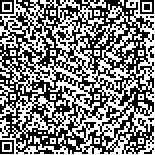袁丽,李航真,胥泽华,等.触觉振动反馈训练对脑卒中后偏瘫患者平衡及行走功能的影响[J].中华物理医学与康复杂志,2022,44(10):888-893
扫码阅读全文

|
| 触觉振动反馈训练对脑卒中后偏瘫患者平衡及行走功能的影响 |
|
| |
| DOI:10.3760/cma.j.issn.0254-1424.2022.10.005 |
| 中文关键词: 振动 反馈 脑卒中 平衡 步态 |
| 英文关键词: Vibration Feedback Stroke Balance Gait |
| 基金项目:四川省科技厅重点研发项目(2019YFS0139) |
|
| 摘要点击次数: 4303 |
| 全文下载次数: 5004 |
| 中文摘要: |
| 目的 观察自行研发的触觉振动反馈训练系统对脑卒中后偏瘫患者平衡与步行能力的影响。 方法 将符合入选标准的恢复期偏瘫患者50例,随机分为对照组和观察组,每组25例,2组患者均接受常规的运动训练、神经肌肉电刺激疗法、生物反馈疗法。在此基础上,观察组每日配合人体步态增加1 h的触觉振动反馈训练,每周5 d;对照组每日增加自行步行训练1 h,每周5 d。分别于治疗前和治疗6周后(治疗后),采用Berg平衡量表(BBS)、Time up and go(TUG)行走测试、下肢Fugl-Meyer评定量表(FMA-LE)评定下肢运动功能,使用美国产Gaitrite步态分析仪获取2组患者的步态参数,选取健侧步长、患侧单支撑相时长/健侧单支撑相时长进行统计学比较和分析。 结果 治疗前,2组患者的健侧步长、患侧单支撑相时长/健侧单支撑相时长、BBS评分、TUG测试时长、FMA-LE评分组间差异均无统计学意义(P>0.05)。治疗后,2组患者的健侧步长、患侧单支撑相时长/健侧单支撑相时长、BBS评分、TUG测试时长、FMA-LE评分均较组内治疗前明显改善(P<0.05)。治疗后,观察组的健侧步长[(60.2±8.2)cm]、患侧单支撑相时长/健侧单支撑相时长[(0.92±0.03)]、BBS评分[(42.9±5.5)分]、FMA-LE评分[(31.4±2.0)分]均显著优于对照组(P<0.05),TUG测试时长[(15.3±5.4)s]显著短于对照组(P<0.05)。 结论 触觉振动反馈训练能显著提高脑卒中后恢复期偏瘫患者的平衡与步行功能,降低跌倒风险。 |
| 英文摘要: |
| Objective To observe any effect of tactile vibration feedback training on the balance and wal-king ability of stroke survivors. Methods Fifty stroke survivors who met the selection criteria were randomly divided into a control group (n=25) and an observation group (n=25). In addition to conventional exercise training, neuromuscular electrical stimulation and biofeedback therapy, the control group underwent one hour of walking training daily, 5 days a week for 6 weeks, while the observation group received tactile vibration feedback training with the same timetable. Before and after the treatment, lower limb motor function was evaluated using the Berg Balance Scale (BBS), the Timed Up and Go (TUG) test and the Fugl-Meyer lower extremity assessment (FMA-LE). A Gaitrite analyzer recorded the gait parameters of the two groups. The step length on the unaffected side was recorded and the duration of the single support phase was compared between the affected and healthy sides. Results Before the treatment, there was no significant difference between the two groups in average step length on the unaffected side or in the difference in duration of the single support phase between the affected and healthy sides. The average BBS scores, TUG test times and FMA-LE scores also were not significantly different. After the treatment all of those indicators were significantly better in the treatment group, on average. Conclusions Tactile vibration feedback training can significantly improve the balance and walking ability of stroke survivors during the recovery period, and lower their risks of falling. |
|
查看全文
查看/发表评论 下载PDF阅读器 |
| 关闭 |